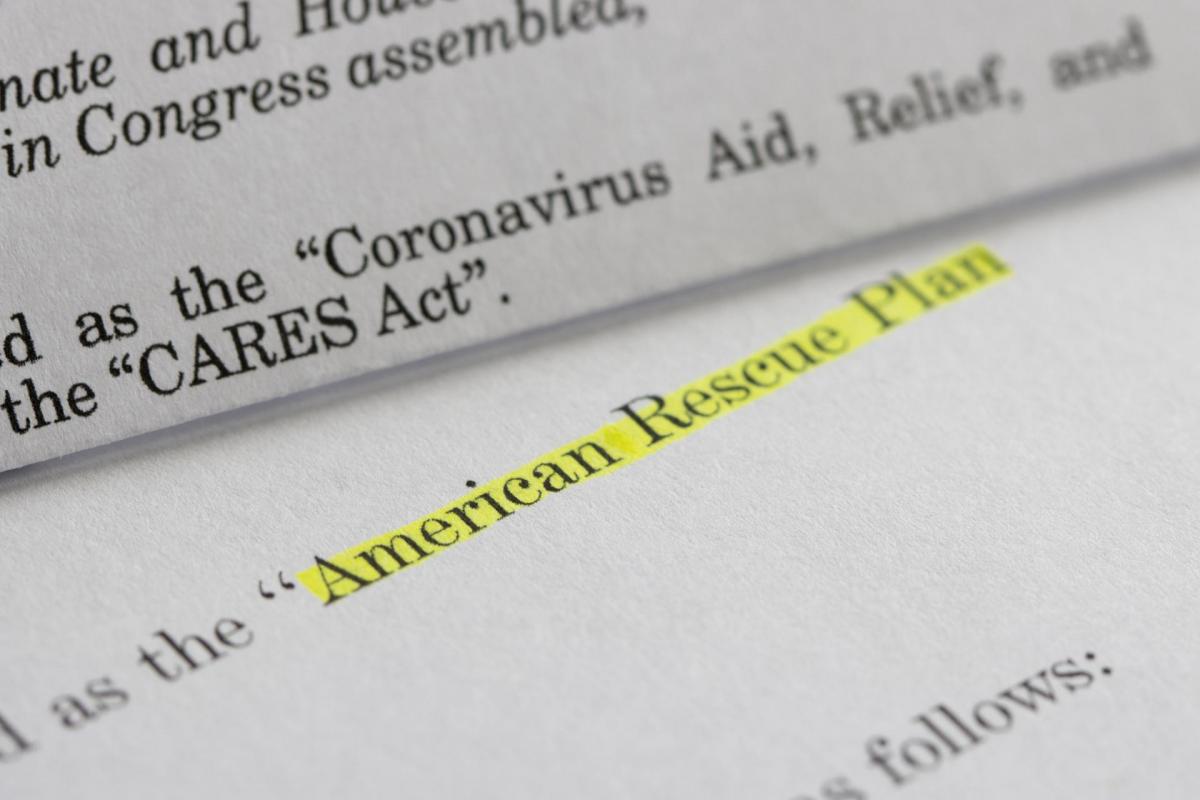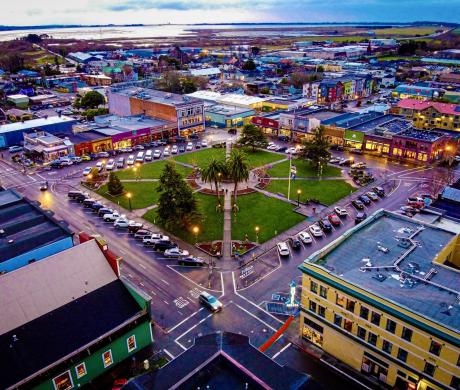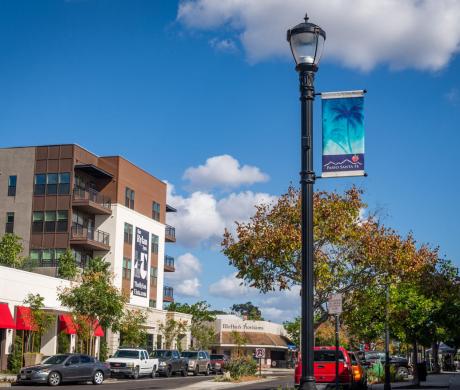The pandemic crushed local economies; recovery depends on how cities navigate emerging economic development opportunities
Gurbax Sahota is president and CEO of the California Association for Local Economic Development (CALED); she can be reached at gsahota@caled.org.
While communities across California and the country excitedly await the disbursement of badly needed relief funds from the American Rescue Plan Act and potential assistance from the president’s American Jobs Plan, one question is being asked over and over again — how do we make the most of these precious one-time investments? There are the obvious front-runners: backfill depleted reserves, fill current budget holes, reinstate cut services, help businesses, and fund programs that help residents impacted by COVID-19. However, there is more to consider as cities look at not just addressing immediate need, but positioning themselves for greater future economic development success.
The California Association for Local Economic Developers (CALED) represents more than 800 economic development practitioners and stakeholders in California, and this network informs our strategies on what communities should be doing now and doing next in order to meet their long-term economic development goals.
Economic development is the creation of wealth through which community benefits are realized. As we’ve seen jurisdictions suffer significant economic losses due to COVID-19 business and travel closures, it is clear that a key path to growing your revenues and sustaining local economies is investing in economic development to ensure that your community’s businesses are successful. That investment can take many forms and may not only be from relief funds. Cities are in a unique position to readdress their economic development agendas and have funding to deliver on the desired goals.
Needs and opportunities
Beyond looking at filling budget and reserve gaps, cities should be methodically analyzing their current situation, future goals, priorities, and all available resources to meet those needs. Because each city is unique and economic development is not a “one size fits all” proposition, asking appropriate questions can help you focus on your specific short-term and long-term needs.
- Do you have a clear vision and defined economic development goals pertinent to the needs of your entire community?
- Do you have an economic development strategy, element, or plan?
- Have you done a current SWOT (strengths, weaknesses, opportunities, and threats) and TOWS (threats, opportunities, weaknesses, and strengths) analysis? Conducting both may yield different perspectives to help inform where you want to invest.
- Do you have to adapt any programs to reach disadvantaged residents who may not have received any COVID-19 assistance or other traditional economic development support?
- Do you have a list of infrastructure projects (in need of repair or new construction)? Is it prioritized?
- Have you reviewed your current zoning to identify opportunities and challenges due to COVID-19 impacts on land values and use types?
- Are economic development projects in progress still viable?
- Are you engaging both businesses and the workforce to encourage more local ownership, avoid displacement, and address equity?
- Taking a broader look at businesses and industry clusters supporting your economy, do you have a diversified mix or are revenues dependent on one or two industries?
- Has the city, workforce development board, region, or local community college done a recent industry cluster analysis to see if there are other, burgeoning industries you may be able to support?
- Have you identified which businesses had supply chain interruptions during the pandemic? Is there an opportunity to attract or grow businesses locally that can meet the needs of those businesses?
- What are your current workforce demographics?
- Do other business support/resource groups have surveys or information from your businesses that can help inform where needs are and how you can assist? These organizations could be chambers, districts, small business development centers, industry associations, workforce development boards, etc.
- How can the city position itself to benefit from innovative practices or changes in city processes adopted during the pandemic, such as increased remote working?
- What are regional economic development projects you can partner on for the benefit of multiple jurisdictions?
Priorities
While this isn’t an exhaustive list of all the questions you can ask to better assess your city’s economic development environment, it is a good start towards creating a list of needs and opportunities. Once you have that list, the next step is to prioritize those items — not necessarily using available funding as the sole lens for analysis. For example, in 2019, CALED received funding from the United States Department of Agriculture (USDA) Rural Development to create a rural infrastructure financing guide. In that work, we identified multiple criteria communities should look at when prioritizing infrastructures projects.
When evaluating projects, there are many factors that play a role in determining if a project is a priority for the community: estimated project costs, financing availability, status of land entitlement, revenue potential when appropriate, political and community support, private sector investment interest, and other factors that are summarized below.
- Infrastructure constraints and the estimated costs to implement each local economic development initiative.
- Employment, revenues, fiscal impacts, and the impacts on wages and salaries earned in the area.
- Economic as well as fiscal impacts that may be realized.
- Implementation potential of each proposed project.
- High, medium, and low priority projects for the jurisdiction where the initiative is located after incorporating project costs, funding availability, status of land entitlement, political and community support, private sector support, and other factors.
Also, while a “wish list” or a project concept can be great for communities to use as a starting point for project review, economic development practitioners need to quickly gather data to fully understand the scope of the project, keys costs for development, and where funding gaps are. Without these details, it is difficult to take a project from possibility to reality.
Resources
In this current stimulus-focused environment, it is easy to get caught up in letting the funding drive what projects and programs you fund versus looking at your priorities and identifying the best funding source. It is prudent for cities to do both reviews so you can address your most pressing needs and also be sure you are not leaving funds behind that could support lower priority activities.
When conducting the review, keep in mind that the resources that best suit your needs may be found in current tools and partnerships. For example, you may have an economic development project that is best financed by partnering with the county to form an Enhanced Infrastructure Financing District versus using stimulus dollars that could support another priority. Do not limit your options by only focusing on those activities allowed by American Rescue Plan Act funding.
This critical analysis requires knowledgeable professional staff. During the pandemic, the most important concern identified by communities was the lack of capacity to support economic development. I can’t stress enough that hiring and training economic development staff is an investment in a city’s ability to take advantage of current and future opportunities, as well as grow your budget and local economy. For cities that do not have economic development staff, that may be a priority to include on your list, and you may need to pool resources regionally or hire a consultant to help you do this review.
Whoever does the analysis of how to match funding sources and priorities, that person or team must know the intricacies of how the financing tools and resources work and the best way to leverage them. For example, does it make sense to use your stimulus dollars to upgrade a piece of infrastructure, or are you better served by pledging some relief as “cash match” and applying for a federal grant through the U.S. Department of Commerce or USDA Rural Development to pay for the rest of the project. Similar to how you may create a “sources and uses” matrix to fund projects, you could create a “priorities and resources” matrix to get the most out of available resources.
Laying this groundwork — assessing needs, prioritizing activities, and understanding resources — positions your city to be prepared as funding and the regulations tied to that funding are released. This process is also a perfect opportunity to revisit your economic development goals and strategy to make sure they are still relevant given the current environment. While cities emerge from the global pandemic, they also lead the efforts to rebuild. The work you do at the local level to move economic development forward ultimately benefits the region, the state, and the country so think big, think local, and be strategic!







